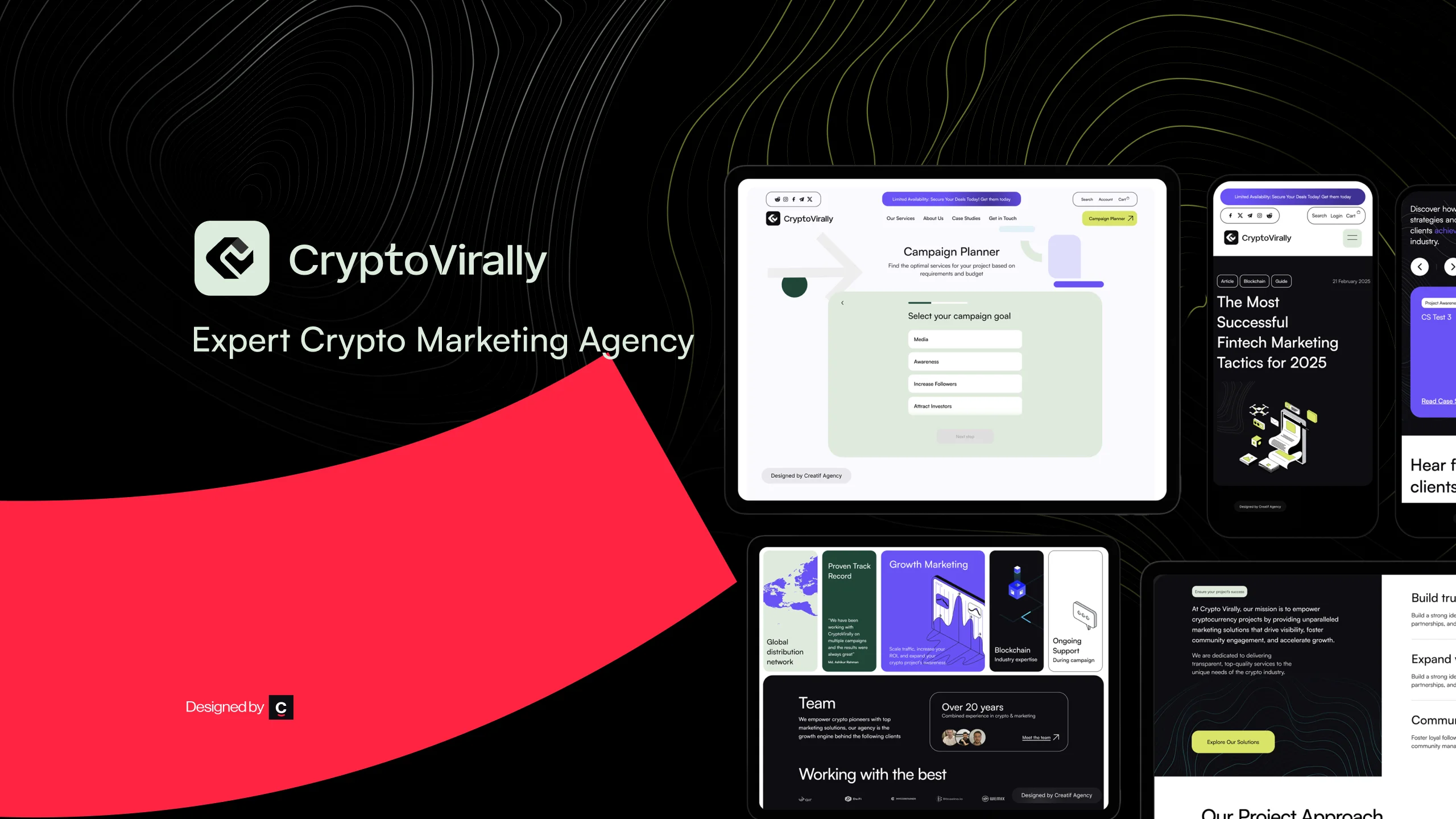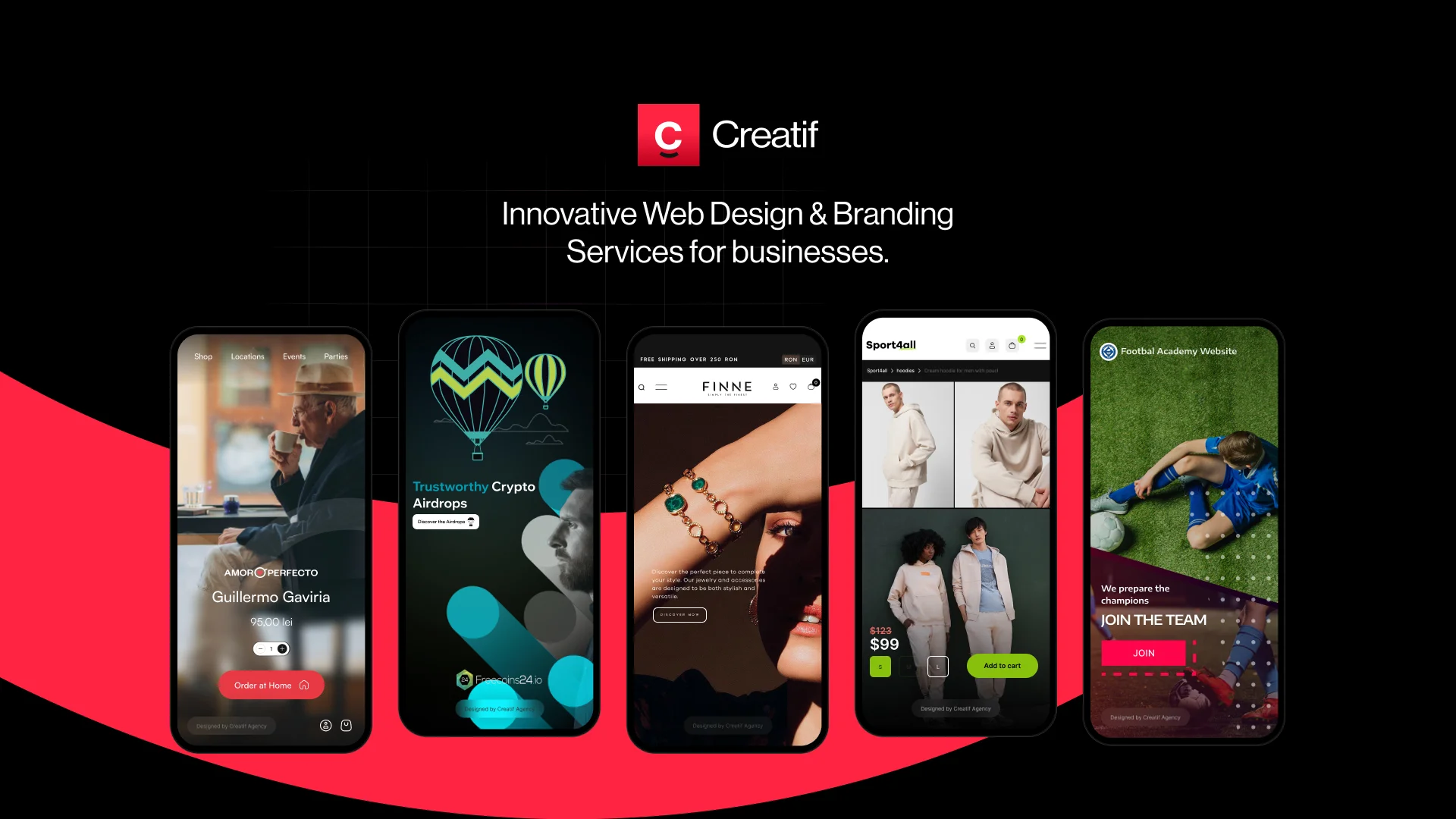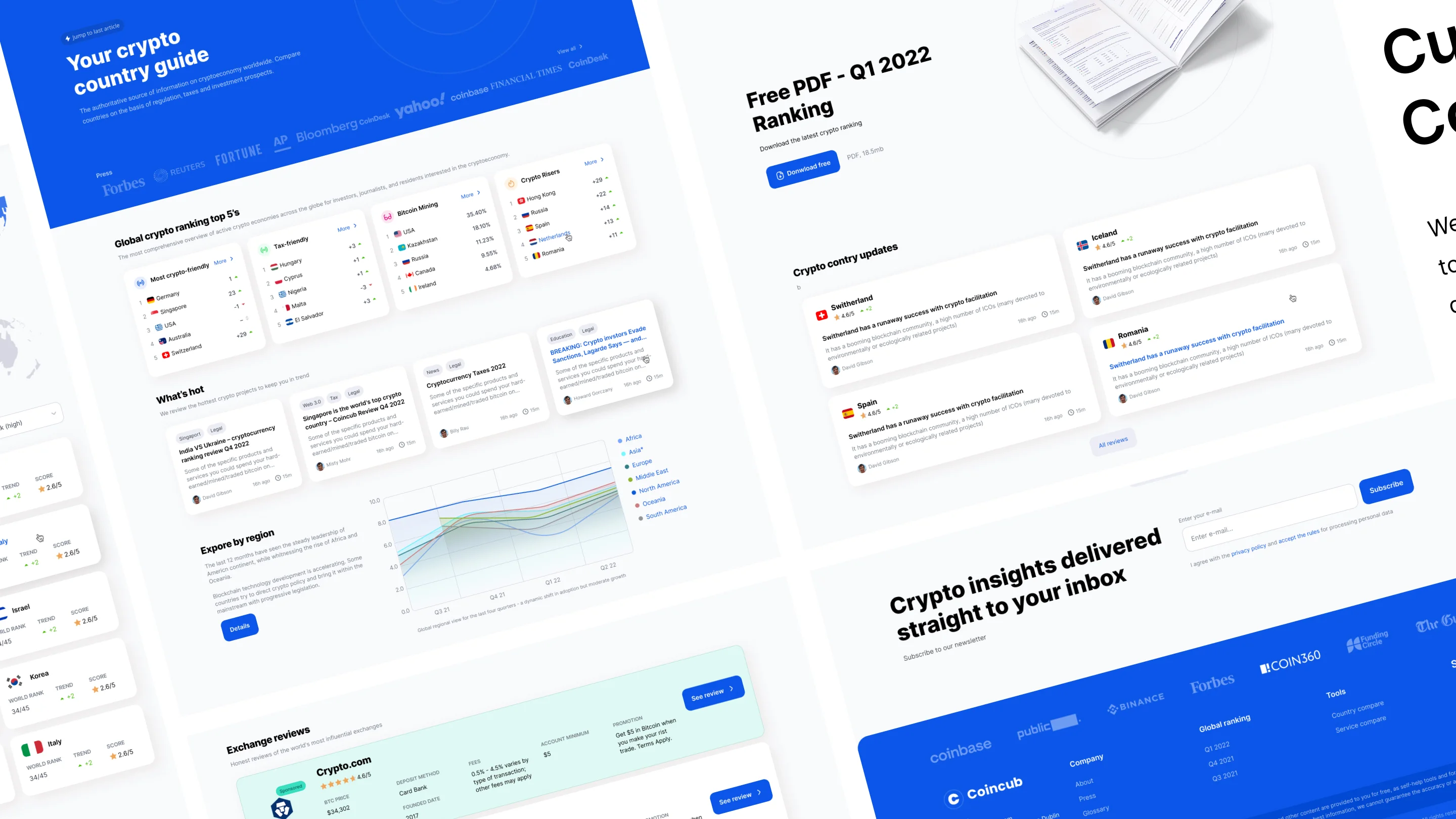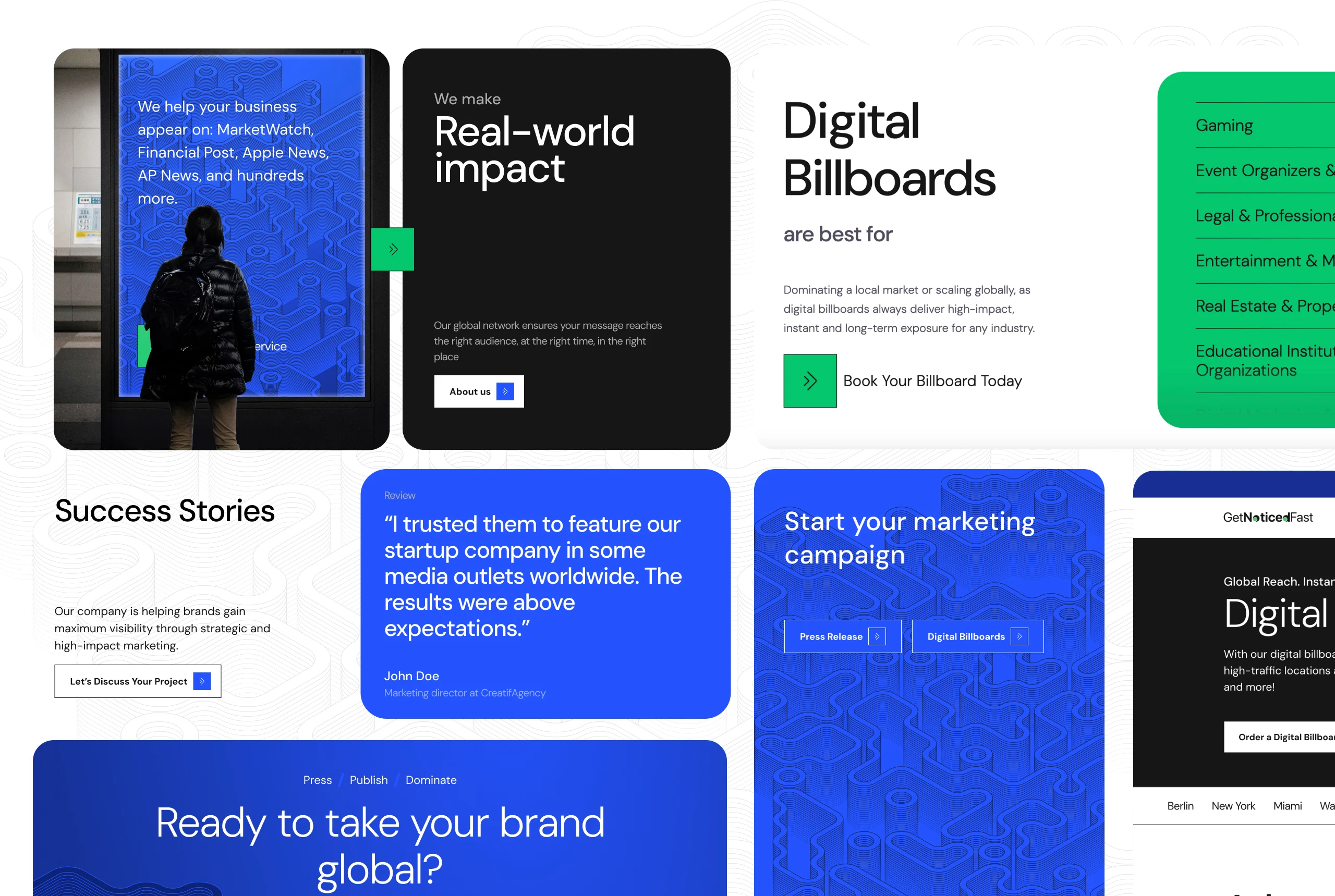Ecommerce Websites
Launch your Ecommerce storefront. Top-notch ecommerce web development services in California.
Let’s get started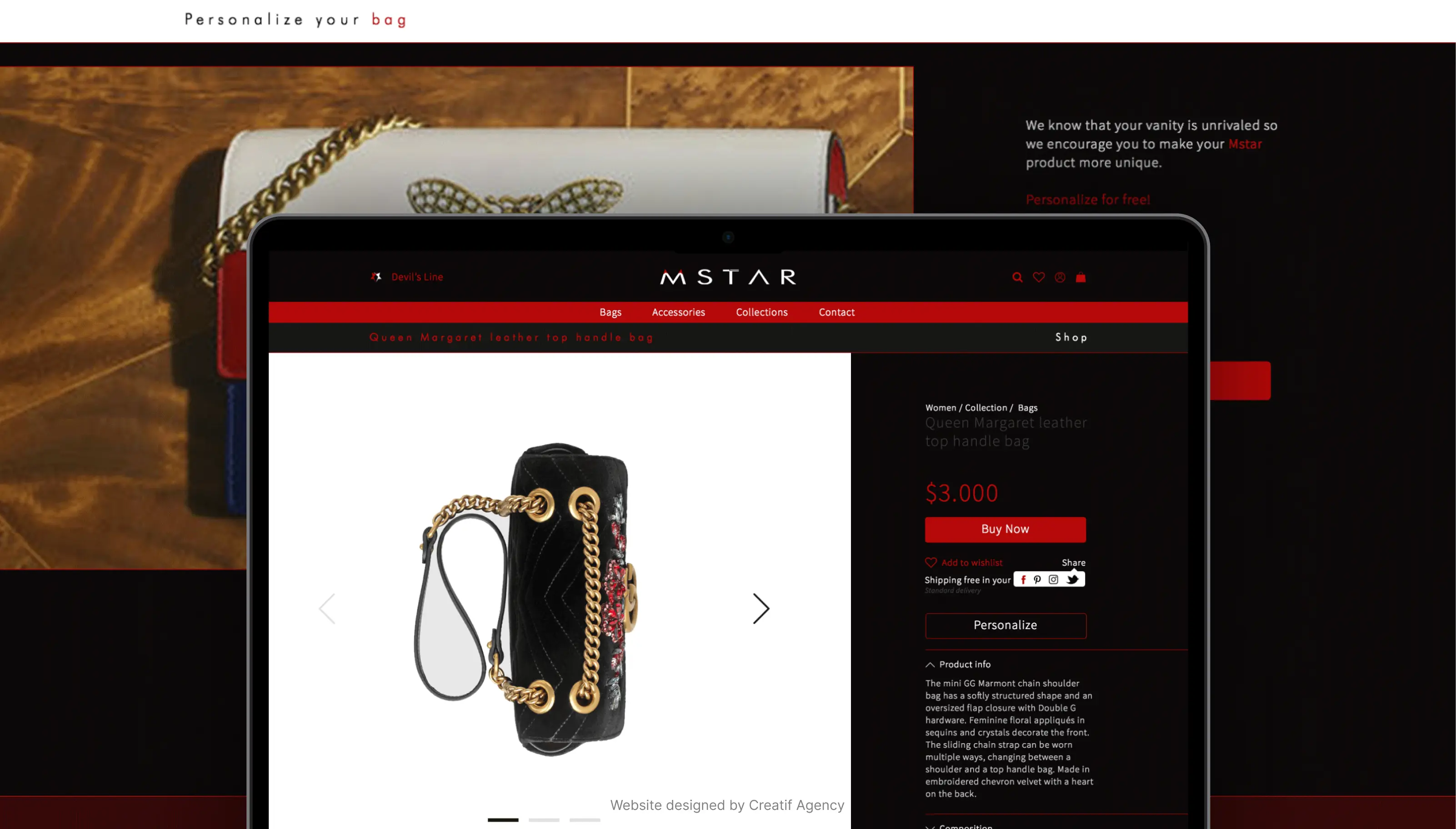
The best Ecommerce web development services in California.
Creatif Agency we managed to create powerful Ecommerce platforms, similar to the most important retailers in the world, Farfetch, LuisaViaRoma or Revolve with a very complex marketing and remarketing features that simply convert.
Start your projectThey are very professional and engaged in the projects they manage.
Ioana Clenciu Founder Amzologist
Top performing Web Design
Our web designers team, based in San Francisco, specializes in creating custom ecommerce solutions that not only meet but exceed the expectations of our clients.
From intuitive user interfaces to seamless payment integrations, we prioritize functionality and performance to ensure an exceptional online shopping experience for your customers.
Our Ecommerce Projects
One package for all your needs
Branding, strategy, planning, website design and SEO, all included for your Ecommerce startup project.
With a long background in building successful online shop websites on a variety of platforms, including WooCommerce and Shopify, we manage to offer our clients all the digital services needed in one place.
Ecommerce Portfolio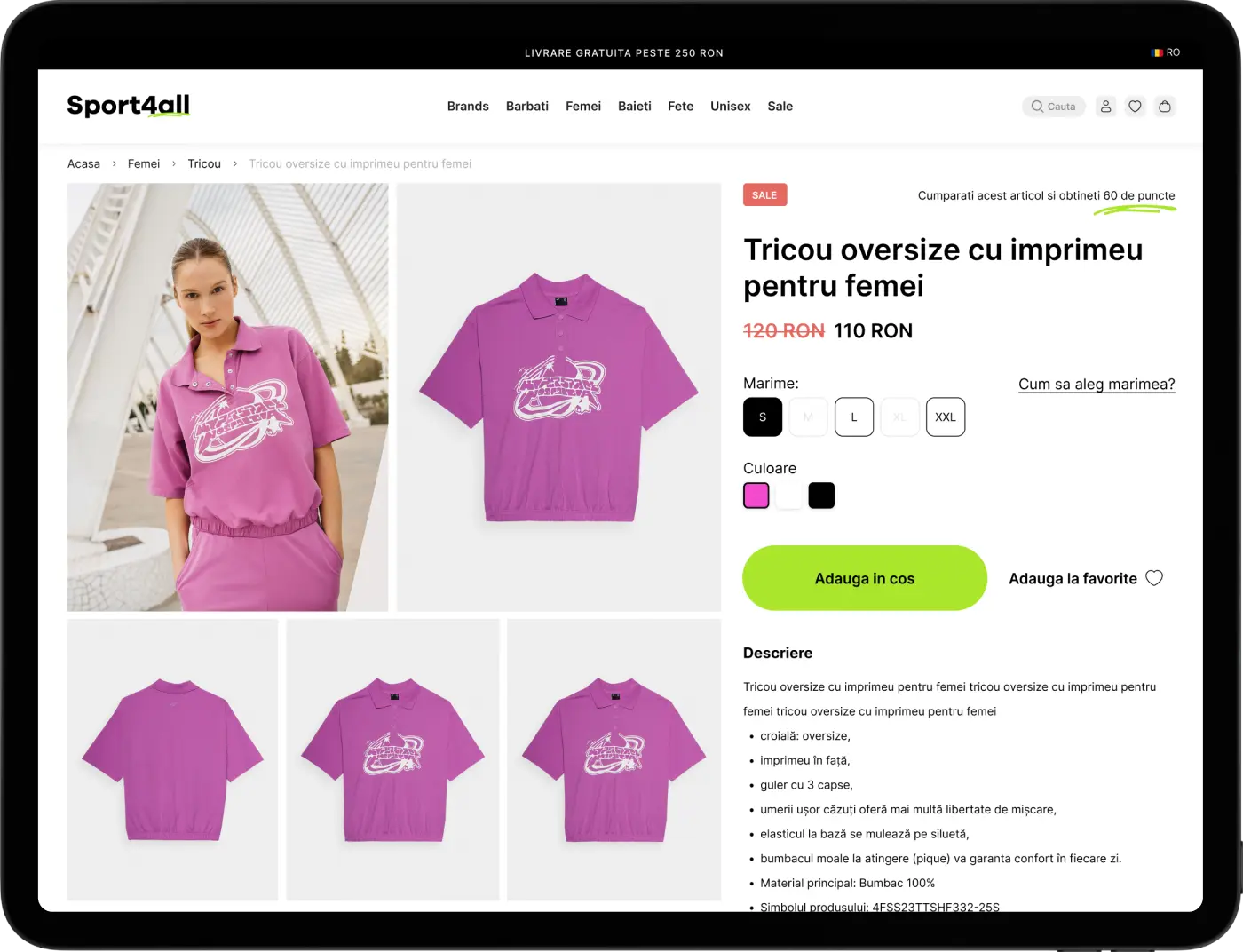
Drive Sales. So many
When you partner with Creatif Agency, you’re not just investing in a website; you’re investing in a guaranteed 125% ROI. Our track record speaks for itself, with businesses experiencing incredible sales growth thanks to our Ecommerce solutions.
Start your project
 Designed by Creatif Agency
Designed by Creatif Agency
Only words of praise for the Creatif Agency team! We did not expect them to be so prompt and professional. They were patient with us and their ideas are brilliant.
Raluca Kroncic
Custom designed Storefront
Very easy to manage!

Each website we create possess a custom easy to use dashboard, where you can easily edit your content and product listings. No programming skills required!
We developed advance features like: club registration system for big discounts, powerful remarketing tools to bring customers back to the site, an abandoned cart recovery system, and a dynamic voucher systems, all this will skyrocket the customer loyalty.
Personalized design
Design is one of the most important element that drive sales. With a complex research that we have for every project, we manage to create a personalized design for your business needs, your industry, and your clients.
No templates. You get a unique design
Latest projects
See how Creatif Agency partners with brands across many industries to craft impactful identities and high-performing websites.
Awards
Award
Award
Award
Award
Award
Our cooperation was very professional, always with the feeling as if they belonged to our company directly
Christian CEO Joined Media Group
Book a discovery meeting
Provide us with details about your project and let us grow your digital brand
Our office location:
Get answers
At Creatif Agency, we understand the importance of trust in any business relationship, and we are committed to upholding the highest standards of integrity, honesty, and transparency in all of our interactions.
We have a proven track record of delivering exceptional results for our clients, and we are proud to have earned their trust and loyalty over the years.
We offer a wide range of services to help businesses succeed online.
Web Design: We specialize in creating stunning, user-friendly websites that are designed to engage and convert visitors into customers. Our team of designers are experts in the latest design trends and techniques.
We also offer custom website development and custom web software, using the latest technologies and frameworks to build high-performance websites and web applications that are optimized for speed, security, and scalability.
We specialize in designing and developing a wide variety of websites, including presentation sites, online shops, SAAS applications, marketplaces, and other custom websites that cater to the specific needs of our clients. No matter what type of website you need, we can help you.
The cost of hiring us varies depending on a number of factors, including the scope of the project, the specific services required, and the complexity of the work involved.
If you are interested in getting a quote about our pricing and services, please describe your project specific requirements. Contact us
Yes we can do the branding for your business. We are an experienced design agency, and branding plays a big part in the design process. We offer a comprehensive suite of branding services.
Most of our clients prefer to do the branding with us, it's easier, faster and less pricing than hiring a secondary agency. So, whether you are just starting out and need help developing your brand from scratch, or you are looking to refresh your existing brand, we have the expertise and experience to help you achieve your goals.
As payment methods we accept the following: direct bank transfer, crypto payments via Utrust and Paypal. Every project we take is based on a legal registered contract and you will be invoiced as per agreement.
For a presentation website the time estimates are usually from 4-6 weeks.
The timeline for our design work can vary depending on the scope and complexity of the project. We always work closely with our clients to establish clear project timelines and milestones, and we do our best to ensure that our work is completed on time and within budget.
Yes! The main service areas of our company are California, Berlin and Romania.
While operating in "remote-office" type, we have team members in multiple states from United States (including L.A., Oakland, San Diego, NYC) and Europe. We have implemented a high performing setup for our team that can cover multiple states and different time zones at the same time, all this by still providing the best of the best in terms of quality of our work.
Creatif Agency specializes in serving a diverse range of industries, including: Crypto and blockchain projects, with expertise in crypto website design and development. Real estate, providing custom website solutions. Engineering and advanced technology sectors. Fashion industry. Marketing and advertising agencies. Healthcare, beauty, retail, and finance sectors. Sports and non-profit organizations, such as youth football academies. Security solutions and technology startups. This broad industry experience reflects our team capability to craft impactful brand identities and high-performing websites for various business needs.
You might be interested in
Web Design agency near you
Need help finding web design services in your area? Our web design company is dedicated to providing custom web design and branding solutions to businesses and individuals .
Find Web Design Services
Extra info
What is an ecommerce website
An ecommerce website is an online platform that allows businesses to sell their products or services to customers over the internet. It serves as a virtual storefront where customers can browse through a wide range of products, add items to their cart, and complete their purchase transactions securely. With the increasing popularity of online shopping, having an ecommerce website has become essential for businesses of all sizes.
An ecommerce website offers numerous advantages over a traditional brick-and-mortar store. Firstly, it provides businesses with a global reach, allowing them to target customers from different geographical locations. Additionally, an ecommerce website operates 24/7, providing customers with the convenience of shopping at any time. It also eliminates the need for physical store space and reduces overhead costs.
To create an effective and successful ecommerce website, it is crucial to consider factors such as user experience, design, functionality, and security. A well-designed ecommerce website should have intuitive navigation, clear product descriptions, high-quality images, and a seamless checkout process. It should also incorporate features such as customer reviews, wish lists, and personalized recommendations to enhance the shopping experience.
Develop an ecommerce website in California
Developing an ecommerce website in California requires careful planning and consideration of various factors. Here are some key steps to follow when embarking on an ecommerce web development project:
- Identify your target audience: Before starting the development process, it is crucial to identify your target audience and understand their needs and preferences. Conduct market research to determine the demand for your products or services and tailor your website accordingly.
- Choose the right ecommerce platform: Selecting the right ecommerce platform is essential for the success of your online store. Consider factors such as ease of use, scalability, customization options, and integration capabilities when choosing a platform. Popular ecommerce platforms include Shopify, WooCommerce, and Magento.
- Design a user-friendly interface: The design of your ecommerce website plays a vital role in attracting and retaining customers. Create a visually appealing and user-friendly interface that is easy to navigate and provides a seamless shopping experience. Pay attention to factors such as color scheme, typography, and mobile responsiveness.
- Integrate secure payment gateways: Security is a major concern for online shoppers. Ensure that your ecommerce website integrates secure payment gateways to protect customer information and facilitate safe transactions. Popular payment gateways include PayPal, Stripe, and Authorize.net.
- Optimize for search engines: Implement search engine optimization (SEO) strategies to improve your website’s visibility in search engine results. Conduct keyword research, optimize product descriptions and meta tags, and build quality backlinks to increase organic traffic to your ecommerce website.
- Test and optimize: Regularly test your ecommerce website for usability, performance, and compatibility across different devices and browsers. Analyze user behavior and feedback to identify areas for improvement and optimize the website accordingly.
By following these steps and working with a professional web development agency, you can develop a successful ecommerce website in California that attracts customers and drives sales.
California ecommerce sales tax and laws
When operating an ecommerce business in California, it is essential to understand the state’s sales tax laws and regulations. California imposes sales tax on the sale of tangible personal property, which includes most products sold through ecommerce websites. Here are some key points to consider:
- Sales tax rates: The sales tax rate in California can vary depending on the location of the buyer. It is important to determine the correct sales tax rate for each transaction to ensure compliance with state laws. The California Department of Tax and Fee Administration provides resources to help businesses determine the appropriate tax rates.
- Sales tax collection: As an ecommerce business owner in California, you are responsible for collecting sales tax from your customers and remitting it to the state. This requires obtaining a seller’s permit from the California Department of Tax and Fee Administration. You can collect sales tax at the point of sale or use an automated sales tax software to streamline the process.
- Exemptions and special rules: California provides certain exemptions and special rules for specific products and situations. For example, some food items, prescription medicines, and certain agricultural products may be exempt from sales tax. It is important to familiarize yourself with these exemptions to ensure accurate tax collection.
- Filing and reporting: Ecommerce businesses in California are required to file sales tax returns and report their sales tax collections regularly. The frequency of reporting depends on the volume of sales. It is crucial to maintain accurate records of all sales and sales tax collected to facilitate the reporting process.
To ensure compliance with California’s sales tax laws, it is advisable to consult with a tax professional or utilize the services of a sales tax automation software that can handle the complexity of sales tax calculations and reporting.
What features should an ecommerce website have
To create a successful ecommerce website in California, it is important to incorporate key features that enhance the user experience and drive sales. Here are some essential features that every ecommerce website should have:
- User-friendly navigation: A well-structured and intuitive navigation system allows customers to easily find the products they are looking for. Implement categories, filters, and search functionality to help users navigate through your product catalog efficiently.
- Clear product descriptions and images: Provide detailed and accurate product descriptions along with high-quality images. Include information such as dimensions, materials, and specifications to help customers make informed purchasing decisions.
- Multiple payment options: Offer a variety of payment options to cater to different customer preferences. This can include credit card payments, digital wallets, and alternative payment methods such as PayPal or Apple Pay.
- Secure checkout process: Implement a secure checkout process to instill trust and confidence in your customers. Use SSL encryption, offer guest checkout options, and clearly communicate your privacy and security policies.
- Customer reviews and ratings: Incorporate a customer review and rating system to provide social proof and build trust. Positive reviews and ratings can greatly influence purchasing decisions and increase customer confidence in your products.
- Wish lists and personalized recommendations: Enable customers to create wish lists and receive personalized recommendations based on their browsing and purchase history. This can help increase engagement and encourage repeat purchases.
- Mobile responsiveness: With the increasing use of mobile devices for online shopping, it is crucial to ensure that your ecommerce website is fully responsive and optimized for mobile browsing. This provides a seamless shopping experience across different devices.
By incorporating these features into your ecommerce website, you can create a user-friendly and engaging platform that drives sales and enhances customer satisfaction.
Which ecommerce platform is best
Choosing the right ecommerce platform is essential for the success of your online store. There are several popular ecommerce platforms available, each with its own set of features and capabilities. Here are three widely used platforms that are known for their reliability and flexibility:
- Shopify: Shopify is a leading ecommerce platform that offers a user-friendly interface and a wide range of built-in features. It is known for its ease of use and scalability, making it suitable for both small businesses and large enterprises. Shopify provides customizable themes, secure payment gateways, and extensive third-party integrations.
- WooCommerce: WooCommerce is a WordPress plugin that allows you to turn your WordPress website into a fully functional ecommerce store. It offers a high level of customization and flexibility, making it suitable for businesses with unique requirements. WooCommerce integrates seamlessly with WordPress, providing access to a vast selection of themes and plugins.
- Magento: Magento is a robust and feature-rich ecommerce platform that is favored by larger businesses and enterprises. It offers advanced customization options, scalability, and a wide range of built-in features. Magento provides powerful marketing and SEO tools, as well as extensive integrations with third-party systems.
When choosing an ecommerce platform, consider factors such as ease of use, scalability, customization options, available support, and associated costs. It is also important to align your platform choice with your business goals and requirements.
How much does an ecommerce website cost in California?
The cost of developing an ecommerce website in California can vary depending on various factors such as the complexity of the project, desired features, and the web development agency you choose to work with. Here are some cost considerations to keep in mind:
- Web development agency: The expertise and reputation of the web development agency can greatly impact the cost. Established agencies with a strong portfolio may charge higher fees compared to freelancers or less experienced agencies.
- Design and customization: The level of design customization required for your ecommerce website can affect the cost. Custom designs and unique features may require more time and resources, leading to higher development costs.
- Ecommerce platform: The choice of ecommerce platform can also influence the cost. Some platforms may have associated licensing or subscription fees, while others are open-source and free to use.
- Functionality and integrations: The complexity of the desired functionality and integrations can impact the cost. Advanced features such as product customization options, multi-language support, or third-party integrations may require additional development time and resources.
- Ongoing maintenance and support: Consider the ongoing maintenance and support costs associated with your ecommerce website. This can include hosting fees, security updates, and technical support.
It is advisable to request quotes from multiple web development agencies and compare their offerings and pricing structures. Keep in mind that investing in a professional and well-designed ecommerce website is crucial for long-term success, and the cost should be viewed as an investment in your business.
Get a custom quote
If you are ready to develop an ecommerce website in California or have any questions about the web development process, our team at Creatif Agency is here to help. We specialize in ecommerce web design and can provide you with a custom quote tailored to your specific needs.
It’s important to note that investing in a high-quality website is a long-term investment that can yield significant returns. We guarantee a 125 Return of Investment. Contact us today at creatif.agency to discuss your project.
Links you might find useful
- Top California Web Design Agency
- Web Design Company in San Francisco
- Los Angeles Web Design Agency
- Silicon Valley Web Design Company
- How to Choose a Web Design Agency in California – Guide
- Creating New Experiences: How We Redefine Web Design in California

